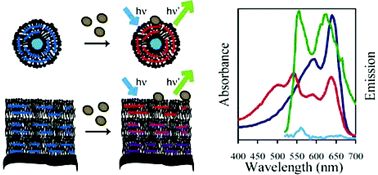Biosensing with polydiacetylene materials: structures, optical properties and applications
Abstract
Polydiacetylene (PDA) materials are used as a platform for detection of biological analytes such as microorganisms, viruses and proteins. The environmentally responsive chromic and emissive properties of the polymer, combined with self-assembled material formats, make these materials particularly attractive for biosensing applications. A variety of approaches have been used in developing these materials and demonstrating their potential for biological detection. In this feature article we describe different PDA material formats, discuss the optical properties that are the basis for signal generation, and review the use of PDA for biosensing.


 Please wait while we load your content...
Please wait while we load your content...